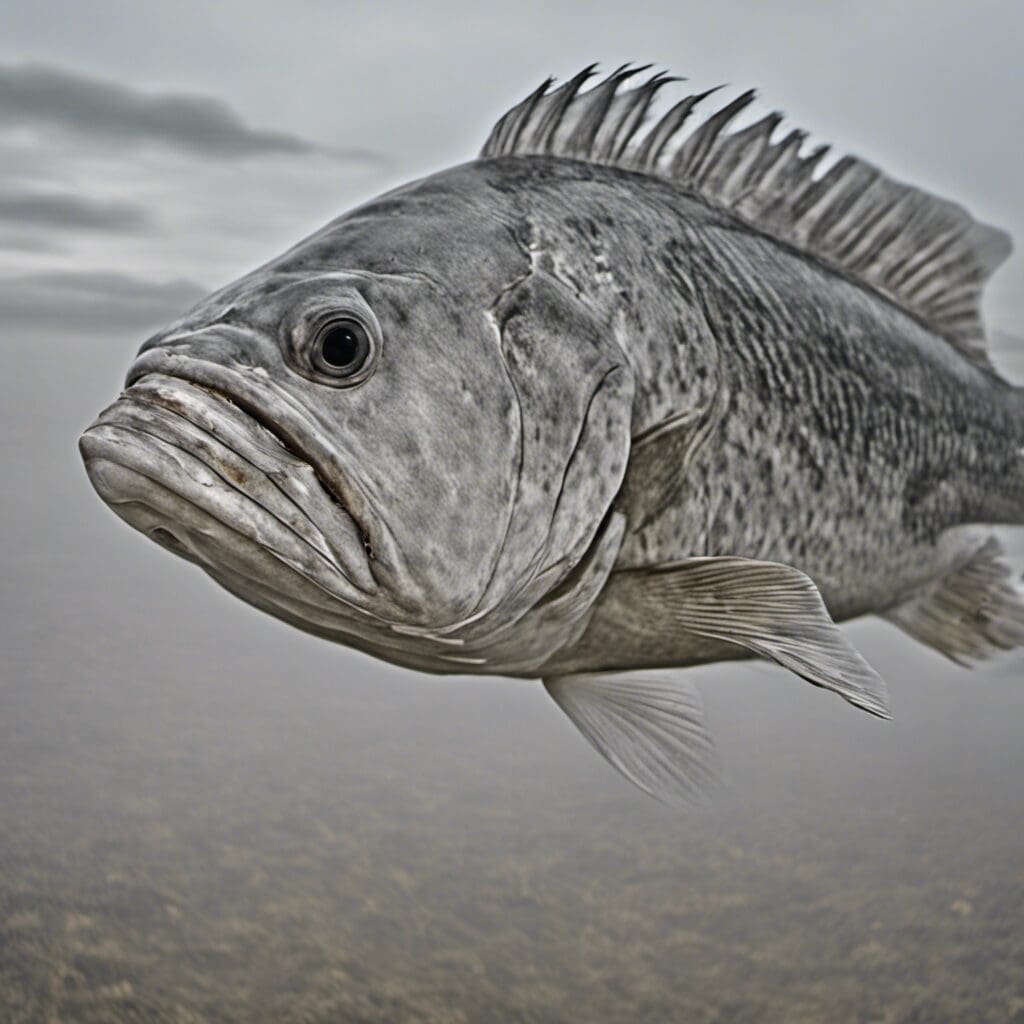Introduction
The Black Drum (Pogonias cromis) is a member of the Sciaenidae family, popularly known as the “drum” or “croaker” family, due to the rumbling noises they produce.
Conservation Status
No special conservation status is attributed to the Black Drum, as they are not currently at risk of endangerment. Nevertheless, several regional fishing regulations exist in order to prevent overfishing and to ensure the sustainability of Black Drum populations.
Statistics
The statistics of the Black Drum are as follows:
| Statistic | Average | Range |
|---|---|---|
| Length | 60-70 cm | 20-150 cm |
| Weight | 14-20 kg | 2-90 kg |
| Average Lifespan | 35-46 years |
Distribution
The Black Drum is predominantly found along the Atlantic coast of the Americas from New Jersey to Brazil, including the Gulf of Mexico. It has also been extensively reported along the Texas coast. Regarding migration patterns, the Black Drum moves south in the winter, returning north when temperatures rise in the spring.
Habitats
Black Drums prefer warm, saltwater environments. They typically reside in depths up to 25 feet, but can reach down to 180 feet. In terms of temperature, Black Drums can tolerate ranges from 8 to 32 degrees Celsius.
When and Where to See
During spring and fall, Black Drum are found near jetties and in channels. While in summer, they gravitate towards deeper waters. They are likely to be spotted near the surface during the early morning and late evening.
Best Fishing Locations
- Padre Island, Texas, USA
- Guadalupe Bay, Texas, USA
- Mosquito Lagoon, Florida, USA
- Indian River, Florida, USA
- Atlantic Beach, North Carolina, USA
- Chesapeake Bay, Virginia, USA
- Delaware Bay, USA
- Cape May, New Jersey, USA
- Rio de Janeiro, Brazil
- Bahia de Banderas, Mexico
Black Drum are often found around structures, such as oyster beds, docks, or bridge pillars, where their typical prey is abundant.
How to Catch
Black Drum can be caught with a variety of baits, such as mullet, shrimp, squid, or crab. They can be caught through a variety of methods, including fly fishing, trolling, and bottom fishing. The best time to catch a Black Drum is late evening during fall and spring.
Identification Guide
The Black Drum possesses a dark gray or black body, with a high arching back. It is often compared to the Red Drum due to similarities in shape and markings, but distinguishable by its lack of a spotted tail.
Culinary Uses
Black Drum is a mild fish, with a taste similar to Red Drum or Sheepshead, but firmer. Its nutritional content includes proteins, vitamins D and B2, as well as key minerals. Typical preparation methods include grilling, broiling, and frying. Cajun Black Drum is a popular recipe.
Additional Information
Black Drum are opportunistic feeders, mainly preying on mollusks, crabs, and small fish. Predators include larger fish species and birds. The Black Drum is also subjected to overfishing by humans, which poses a significant threat.
The Black Drum’s ability to adapt to a range of habitats and salinity levels enables it to live in diverse environments. These attributes together with its delicate taste have made the Black Drum an important target for commercial and recreational fishing for centuries.
References and Further Reading
Additional information can be found from reliable resources such as FishBase, U.S Fish and Wildlife Service, and Texas Parks and Wildlife Department.

